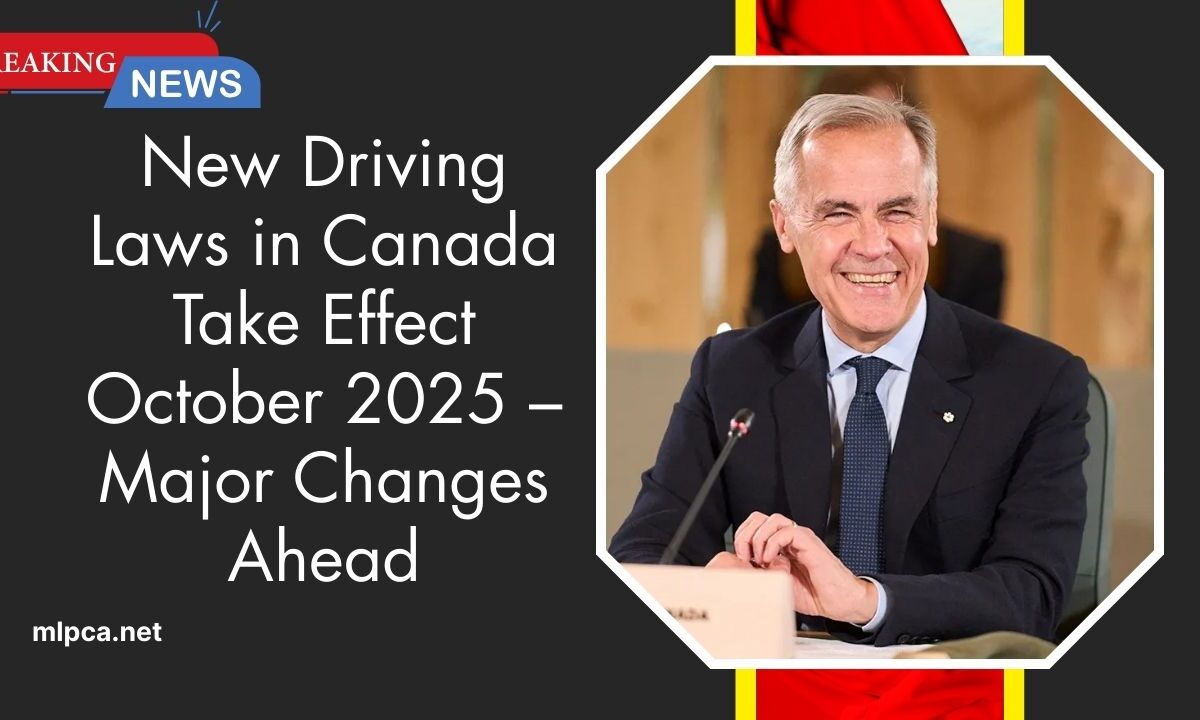Canada is set to revolutionize its traffic laws in October 2025, with sweeping reforms that will impact drivers nationwide.
These changes aim to enhance road safety, improve traffic efficiency, and hold drivers more accountable for their actions behind the wheel.
Whether you’re a daily commuter, commercial driver, or an occasional traveler, it’s important to understand the upcoming shifts and how they may affect you.
Key Changes in Traffic Laws for October 2025
Stricter Speed Limits and Enhanced Enforcement
Starting on October 1, 2025, a range of new speed limits and expanded enforcement zones will be introduced in several provinces, all aimed at reducing accidents and ensuring pedestrian safety.
- Ontario, Quebec, and British Columbia will implement a 30 km/h speed limit in residential areas, especially near schools and busy pedestrian zones.
- Photo radar enforcement will now extend into suburban and rural areas, boosting speed monitoring even outside urban centers.
- Alberta will enforce a 24/7 reduced speed limit in construction zones, with immediate license suspensions for drivers exceeding the limit, regardless of whether workers are present.
Province-Specific Speed Changes and Enforcement Measures
| Province | New Speed Limit/Measures | New Enforcement Procedures |
|---|---|---|
| Ontario | 30 km/h in residential areas, especially near schools | Expanded photo radar zones |
| Alberta | All-time reduced speed in construction zones | Immediate license suspensions |
| Quebec | Reduced limits in school zones | Fines doubled during school hours |
These updates reflect growing concerns over pedestrian safety, particularly for children and cyclists in densely populated neighborhoods.
Stricter DUI Regulations and Advanced Roadside Testing
A major shift in Canada’s DUI laws will come into effect with a lowered BAC limit, dropping from 0.08% to 0.05%. This change aligns Canada with international road safety standards and aims to reduce impaired driving fatalities.
- AI-enhanced breathalyzers and drug screening tools will be used to provide more accurate and quicker roadside tests.
- Refusing a test will now result in an automatic $2,500 fine and a 90-day license suspension.
These measures indicate a move towards zero-tolerance enforcement, especially in high-traffic areas such as urban and nightlife districts.
Overhauled Demerit Point System and Penalties for Repeat Offenders
The new demerit point system will bring more stringent penalties for violations, such as distracted driving, speeding in safety zones, and failure to yield. Some of the key updates include:
- Drivers accumulating 10 or more points within 12 months will be required to attend mandatory defensive driving courses.
- Certain provinces will provide government-funded programs for first-time offenders to reduce penalties in exchange for education.
These changes aim to both penalize reckless driving and promote driver rehabilitation, thereby preventing repeat offenses.
New Fines for Idling and Parking Violations
In response to growing environmental concerns, new rules will target vehicle idling and illegal parking:
- Anti-idling laws will impose fines of $150 to $400 for vehicles left idling for more than 60 seconds in non-extreme weather.
- Illegal parking fines will increase, especially near bike lanes, crosswalks, and fire hydrants.
- Towing operations will increase, particularly during peak hours in downtown areas.
These measures are designed to reduce urban congestion, protect non-motorized commuters, and decrease vehicle emissions in city centers.
Why These Changes Are Crucial for Road Safety
The upcoming traffic law changes are not just about issuing fines—they reflect Canada’s commitment to creating safer, more sustainable roads. The goal is to:
- Reduce traffic accidents
- Lower fatalities related to road incidents
- Encourage responsible driving behavior
For drivers, even minor infractions could now lead to significant legal and financial consequences. Staying informed and compliant is crucial in order to avoid costly penalties.
How to Prepare for the Upcoming Changes
As October 2025 approaches, here are steps you can take to ensure you’re prepared for the new regulations:
- Review speed zone changes in your area to avoid speeding fines.
- Avoid alcohol or drugs before driving, as new DUI limits are stricter.
- Keep your phone out of reach to prevent distracted driving penalties.
- Familiarize yourself with the new demerit point system and how penalties are assigned in your province.
- Plan ahead for legal parking, especially near schools, parks, and bike lanes.
Canada’s traffic law reforms for October 2025 represent a major step towards safer and more accountable driving across the country.
By adhering to the new speed limits, avoiding impaired driving, and understanding the penalties for infractions, you can stay ahead of the curve and contribute to safer roads for everyone.
FAQs
What is the new BAC limit in Canada for October 2025?
The new Blood Alcohol Concentration (BAC) limit will be reduced from 0.08% to 0.05%, aligning with international standards.
How much will I be fined for idling my vehicle in Canada?
If your vehicle is idling for over 60 seconds in non-extreme weather, you could face a fine ranging from $150 to $400.
Will I face immediate penalties for speeding in construction zones in Alberta?
Yes, Alberta will enforce 24/7 reduced speed limits in construction zones, and drivers who exceed these limits may face immediate license suspensions.
